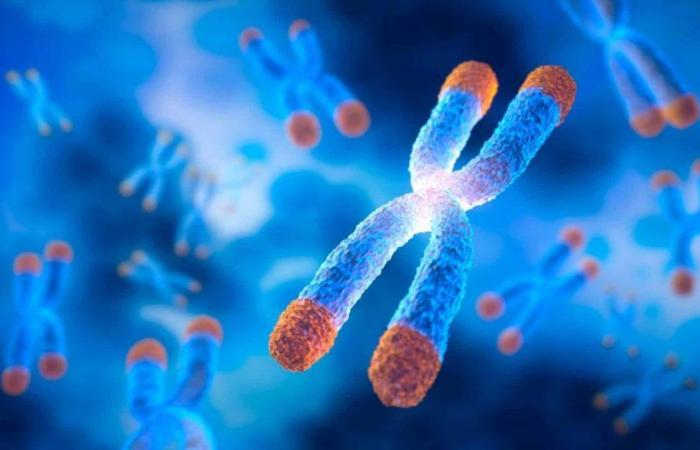⇧ [VIDÉO] You might also like this partner content
Researchers have identified a small molecule that significantly reduces age-related inflammation and improves brain and muscle function in mice. The compound works in particular by restoring levels of telomerase, an enzyme essential for maintaining the integrity of telomeres and which declines with age. These findings could have important implications for both the fight against age-related diseases and cancer.
Many epigenetic changes occur with aging and cause progressive and irreversible functional and physiological decline. Among these changes is the shortening of telomeres, the structures surmounting the ends of chromosomes and contributing to their stability.
Telomeres are complex sequences of up to 15,000 base pairs. They lose between 25 and 200 base pairs during each cell division process. These losses can be exacerbated by oxidative stress. When telomeres become too short or too altered, it triggers a cascade of DNA damage, which can lead to cellular senescence (a phenomenon of cellular aging during which inflammatory markers are released and damage tissues).
Telomere shortening is compensated by telomerase (or telomerase reverse transcriptase, or TERT), an enzyme inducing the synthesis and extension of telomeres. However, the activity of this enzyme decreases with age. For example, studies have revealed a correlation between the decrease in this enzyme and age-related pathologies, such as Alzheimer’s. Mice in which TERT alleles have been deactivated exhibit progeric syndromes (premature aging) and chronic inflammatory and degenerative conditions.
“ Epigenetic repression of TERT plays a major role in the cellular decline observed at the onset of aging, by regulating genes involved in learning, memory, muscle performance and inflammation “, explains in a press release Ronald DePinho, of the MD Anderson Cancer Center at the University of Texas. DePinho and his colleagues then suggested that by restoring TERT levels to levels equivalent to those in younger individuals, it is possible to reverse various processes associated with aging. In a new study published in the journal cellthey identified a compound specifically targeting the TERT gene for this purpose.
Graphical summary of the study. © Hong Seok Cale et al.
Formation of new neurons after 6 months
To identify the new compound, the research team carried out a high-throughput screen including more than 650,000 candidate molecules that could potentially “derepress” the TERT gene and restore its expression to a level equivalent to that of young cells. After identifying the correct TERT activating compound (TAC), the researchers carried out tests on preclinical models (mice) whose age was equivalent to human adults over 75 years old, as well as on senescent human cells.
An increase in telomere synthesis in human cell lines was observed. This increase was accompanied by a reduction in DNA damage, which improved the cells’ ability to multiply. These findings suggest that the compound is easily taken up by cells and interacts effectively with the genes present.
In mice, the compound was found to induce the formation of new neurons in the hippocampus (the brain region responsible for memory) in just 6 months of treatment. These results were correlated with an improvement in cognitive performance, an increase in the expression of genes involved in learning and memory as well as an increase in synaptic connectivity.
Significant improvement in neuromuscular function, coordination, grip strength (maximum voluntary hand force), and movement speed was also observed. This suggests a reversal of sarcopenia, a condition in which muscle mass, strength and performance naturally deteriorate with age.
See as well


These observations are consistent with hypotheses from previous studies, suggesting the ability of TERT to interact and control the activity of different transcription factors. “ By pharmacologically restoring TERT levels, we reprogrammed the expression of these genes, resulting in improved cognition and muscle performance, while eliminating the hallmarks of many age-related diseases. “, explains DePinho.
On the other hand, the compound TAC significantly reduced “inflammaging” (a process in which inflammatory markers linked to various diseases increase with age) in human blood and tissue samples. The activity of the p16 gene, a key driver of senescence, was also reduced — implying a significant reduction in aging cells.
However, although these results are encouraging, more research is needed to properly assess the effectiveness and especially the safety of the compound. It is indeed important to know that a high level of telomerase is associated with the exacerbated proliferation of cancer cells. Nevertheless, “our deeper understanding of the molecular mechanisms driving the aging process has uncovered viable drug targets, allowing us to explore opportunities to intercept the causes of a variety of chronic diseases linked to age,” DePinho concludes.








